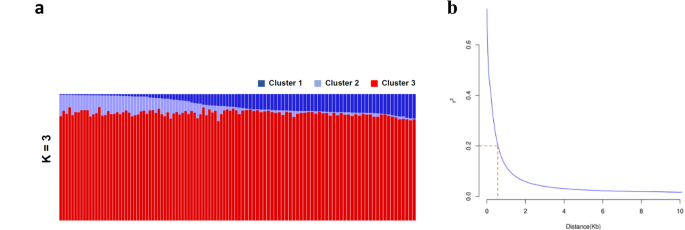Mycology

More pictures available if needed. I broke a few open that were in rougher shape and they are solid white and spongy all the way through. Found in open woods in West Kentucky. Thinking about frying these up and seeing how they taste but want a bit more assurance that I'm not taking a huge risk doing so. I couldn't find these in my National Audubon Society Field Guide so I'm a bit reluctant to take the chance.

Each one is no bigger than a couple inches.
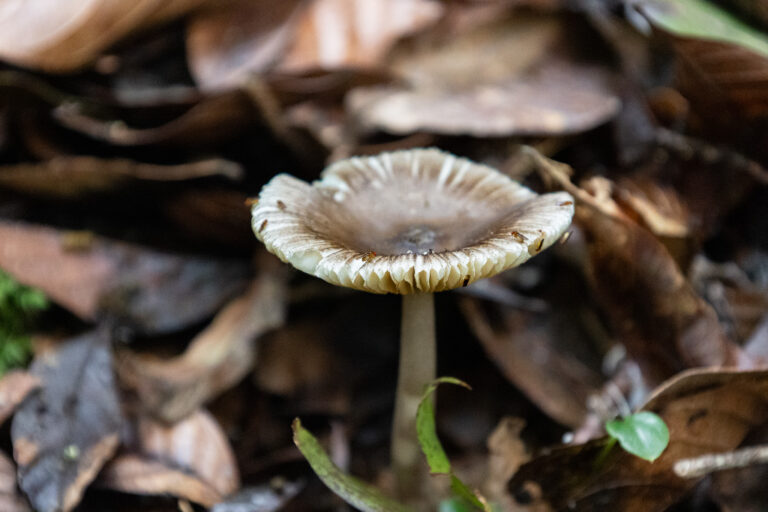 news.mongabay.com
news.mongabay.com
cross-posted from: https://hexbear.net/post/3466560 > by Sofia Moutinho > > - Mycorrhizal fungi live in symbiosis with plants, providing them with nutrients necessary to thrive and potentially playing a key part in preserving threatened species. > - Although research into mycorrhizae has so far been sparse in Latin America, efforts are gaining momentum, with experts studying how the fungi could help save the Colombian black oak, an endangered, endemic species. > - In Huila, Colombia, local communities are successfully working with researchers on a black oak restoration project using seeds “inoculated” with fungi. > > >“All this forest above us, and we are here looking down,” says Corrales, a fungi ecologist and expedition leader at the Society for the Protection of Underground Networks (SPUN), a nonprofit research organization mapping fungi worldwide. For the last two years, the group has been searching in Colombia’s black oak forests for mycorrhizae, a type of fungi that establishes a unique symbiosis with plants that’s fundamental to keeping forests alive. > > >Most plants worldwide are associated with these fungi. Mycorrhizae grow around roots, forming vast networks of thin, cotton-like filaments that extend into the lower soil levels and reach the litter fall. Through this system, the fungi can break down organic matter, such as dry leaves, and even mine minerals in rocks and deliver water and essential nutrients directly to plants’ roots. In return, the roots provide the fungi with sugars, essential for their survival. > > [Full Article](https://news.mongabay.com/2024/09/to-save-endangered-trees-researchers-in-south-america-recruit-an-army-of-fungi/)

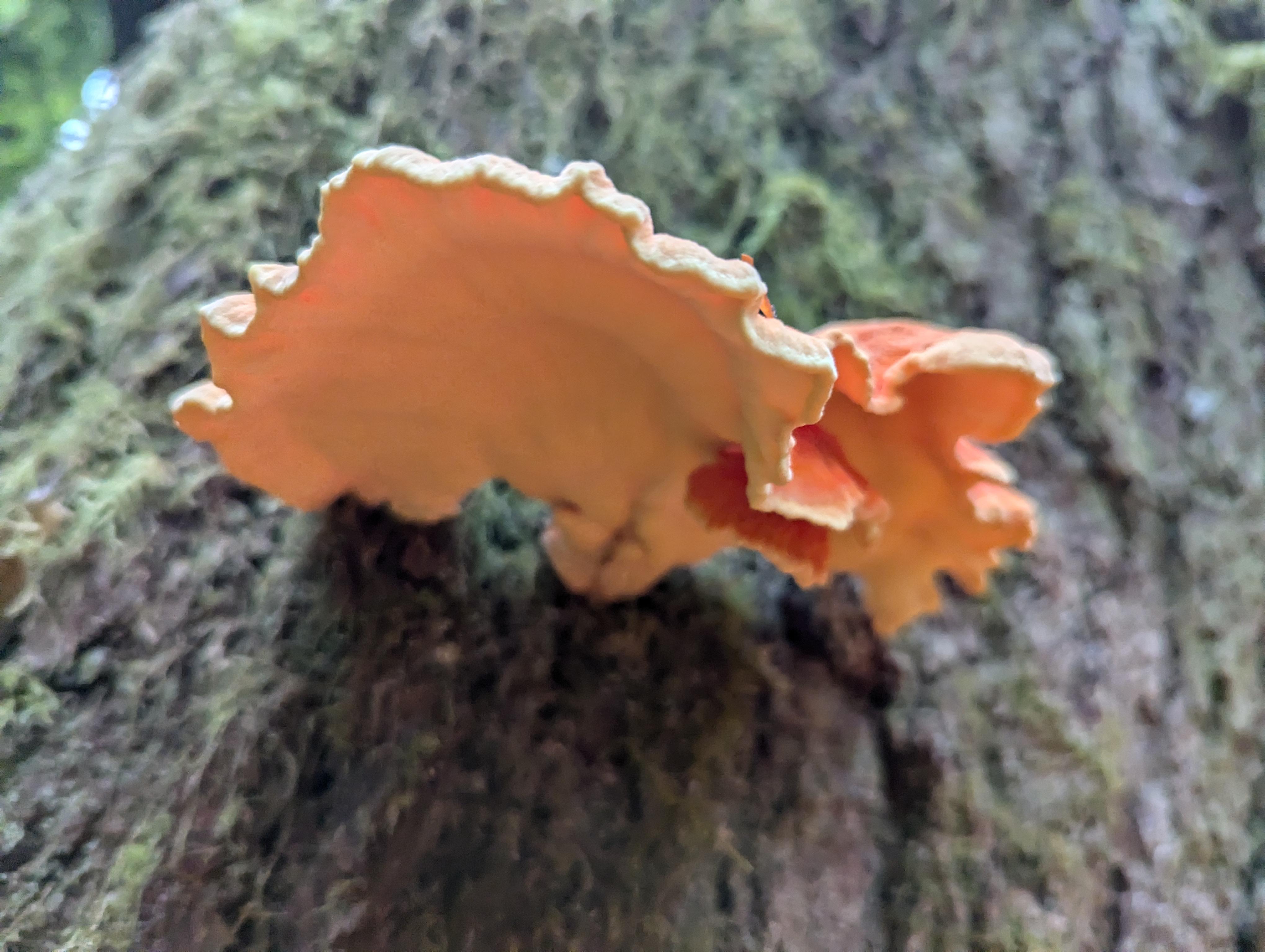 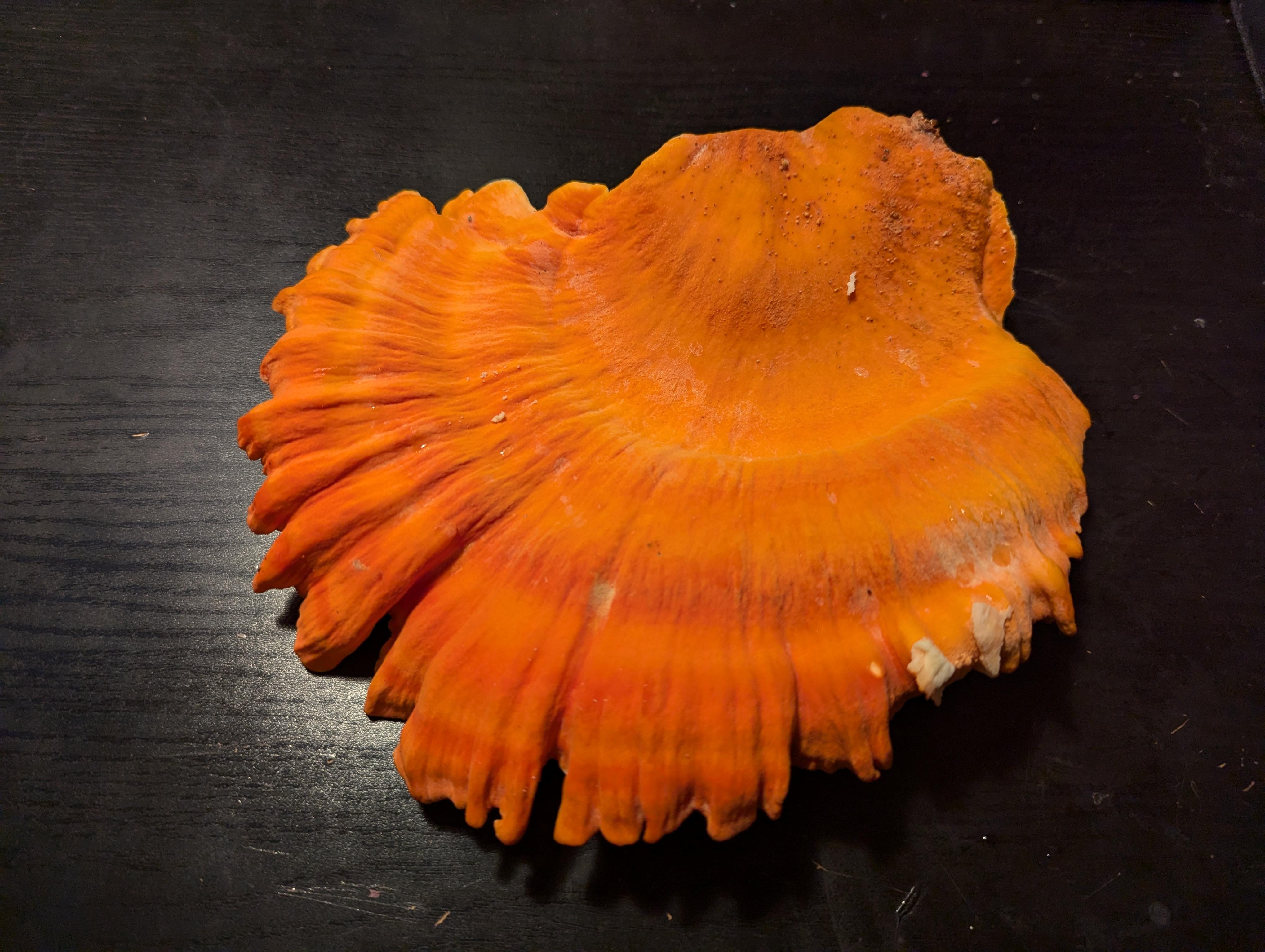 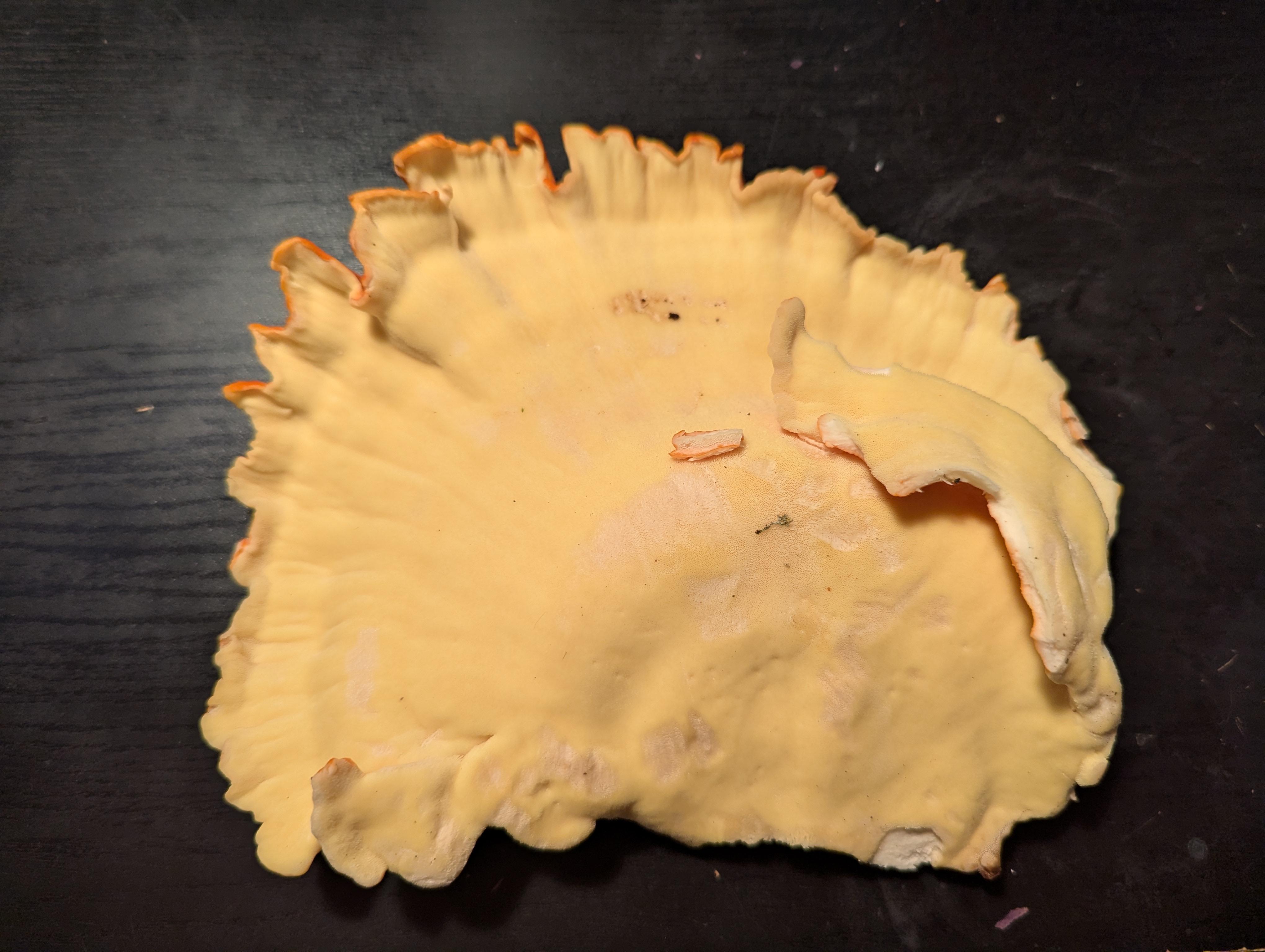 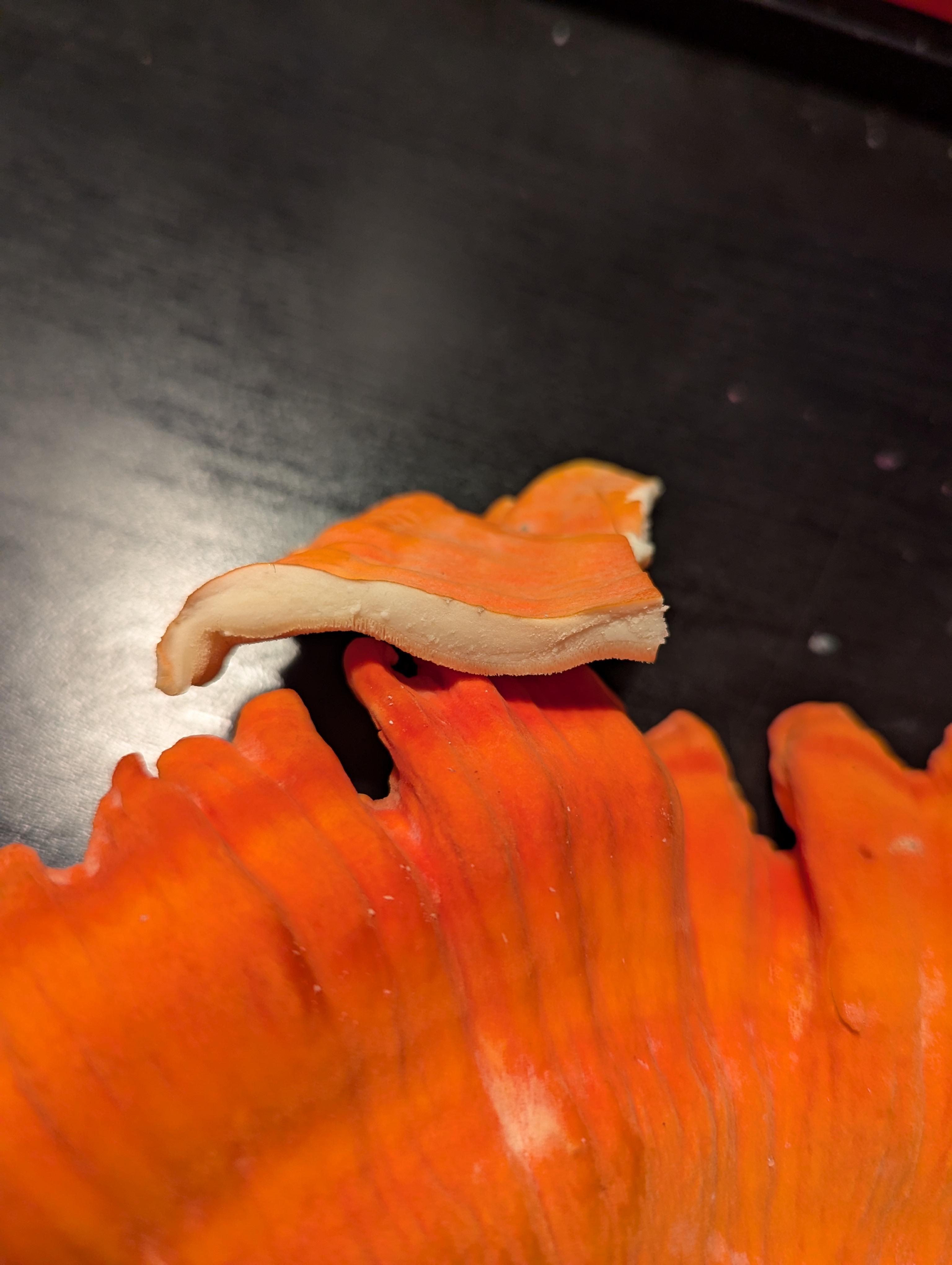 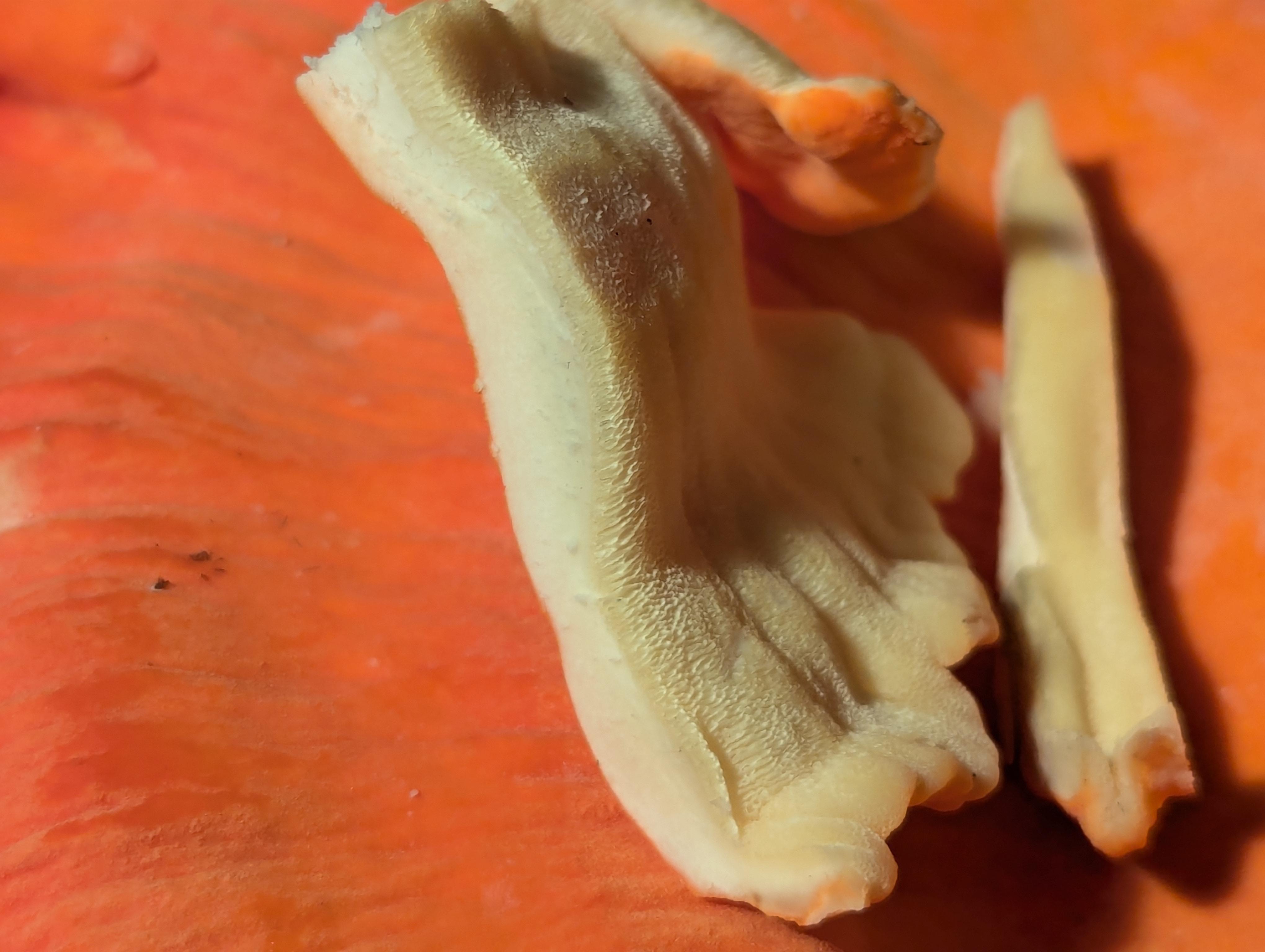 Found in Cascadia/PNW in mid-August. If it is indeed chicken of the woods (ie laetiporus), I'm curious as to which species. --- Cross-posts: - https://sh.itjust.works/post/23697229

They looked dark, and ominous. So I snapped em.

Looked cute, colours lovely, had to snap it.

Scavenged these in the woods of NW Ontario

  The underside instantly darkens when scratched.

Found during a wet summer in scandinavian. Mostly pine trees and beech forest 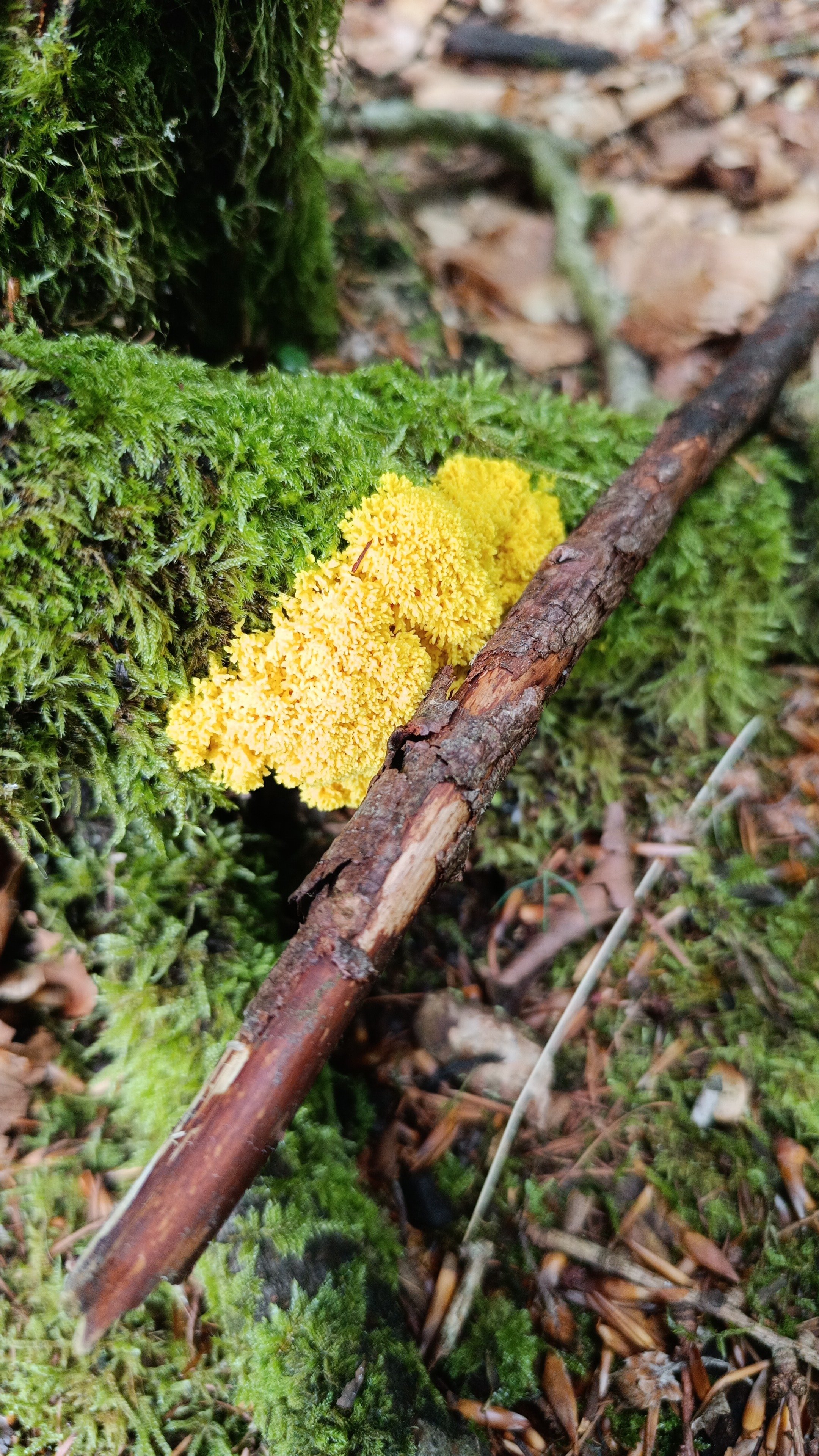 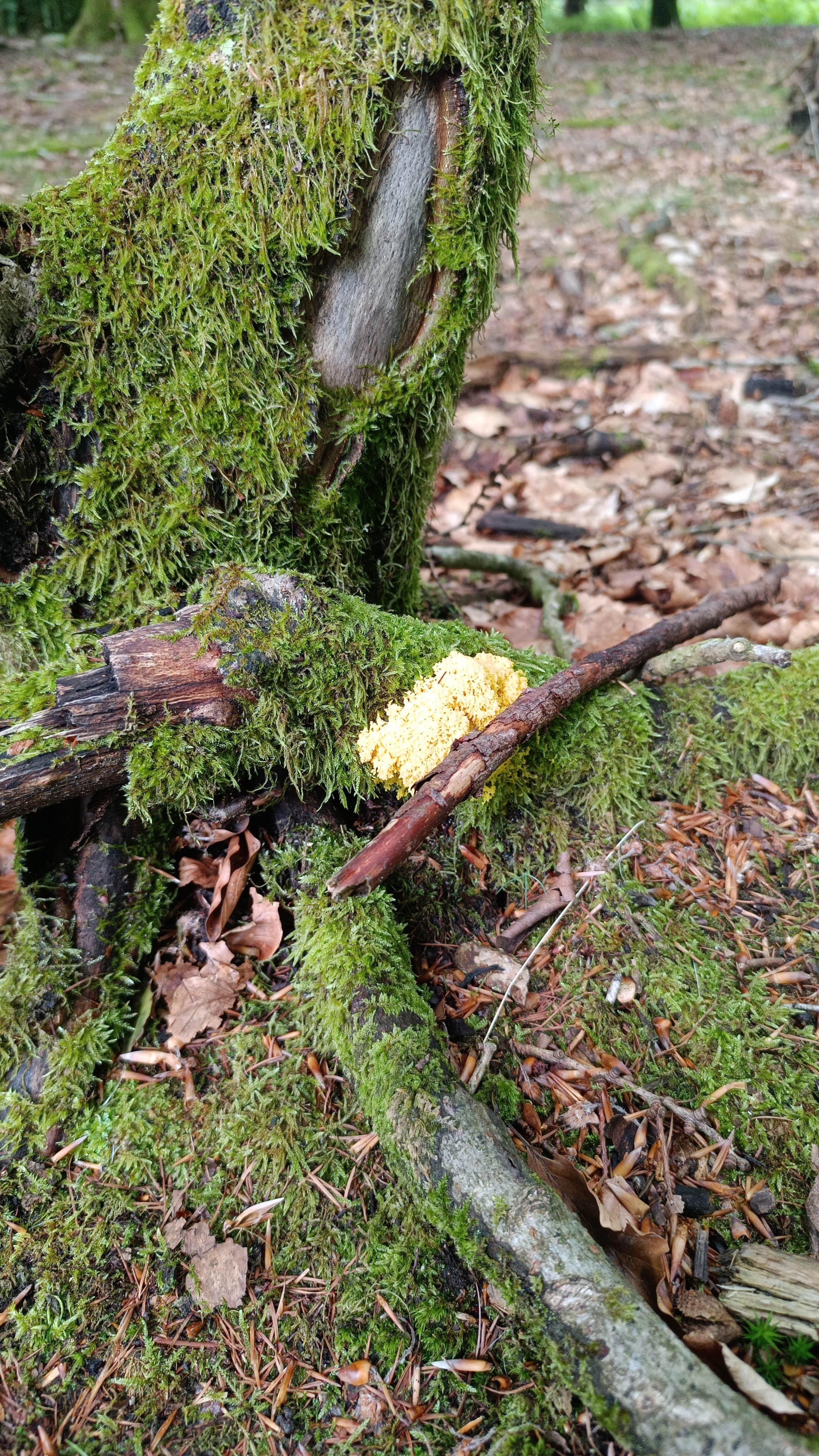

It’s gurgling up outta the ground in my backyard. Rural NC, Piedmont area. 
Went on a trip recently to North and South Island and saw some cool mushrooms... the blue ones were a surprise find. I was more surprised that they didn't seem to grow in more places. Perhaps it's too cold there?

On the 9 June 2023, at Mala, Karkala, Karnataka, India, researchers found Rao’s intermediate golden-backed frog, (Hylarana intermedia) with a rather fetching, fungal companion growing out of it's side Mycologists identified the fungi as Common Bonnet, part of the Mycena genus, a type of fungi that mostly grows on rotting wood from dead trees, however it has also been discovered to be able to thrive on living plants as well 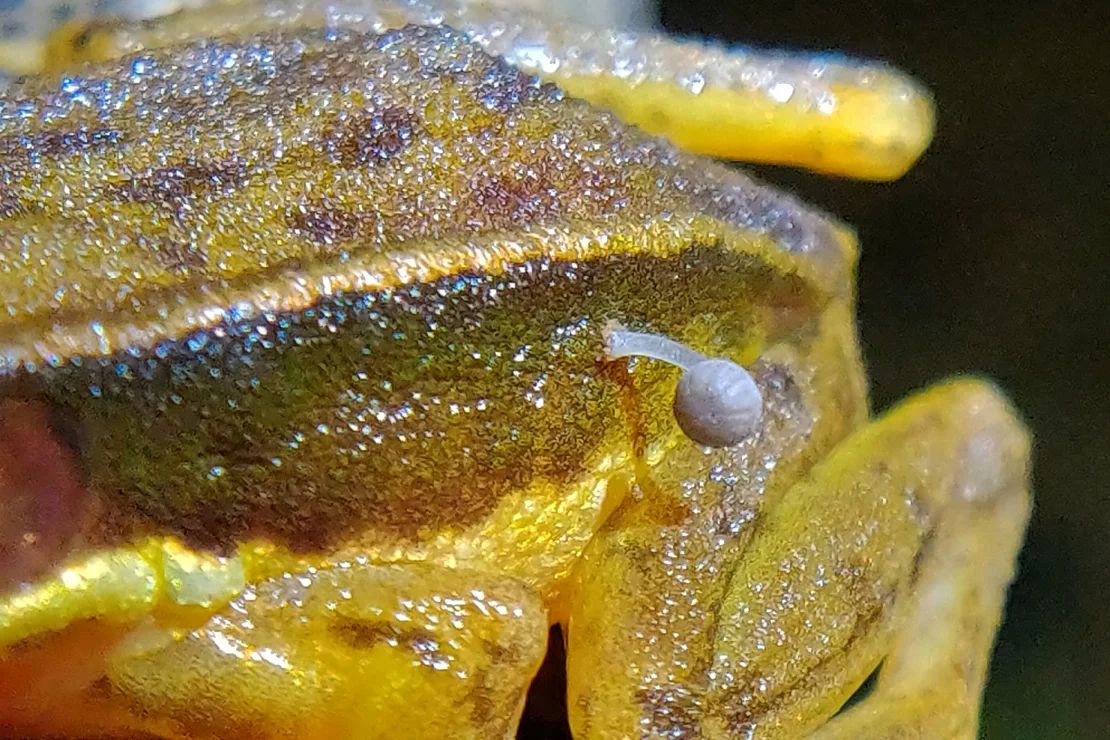 The frog appeared to be quite healthy and was not caught, so there's no definitive answer why it was hosting a mushroom, however... >...one of the possibilities is that there is a small piece of woody debris under the skin of the frog after it got lodged in the skin and it has sprouted a mushroom from it.... All info from [here](https://journals.ku.edu/reptilesandamphibians/article/view/20966/19496) and [here](https://edition.cnn.com/2024/02/29/world/mushroom-frog-growth-chytrid-disease-scn/index.html) All photos by [Lohit Y.T.](https://journals.ku.edu/reptilesandamphibians/article/view/20966/19496) one of the researchers who discovered the frog and co-author of the paper
 www.ffungi.org
www.ffungi.org
The inclusion of fungi as an official area of interest puts funga on an equal footing as flora and fauna when referring to macroscopic life on Earth. Funga refers to "fungi of a specific region, habitat, or geological period," serving as an equivalent concept to flora and fauna for plants and animals. This historic step will help write this neglected kingdom of life into conservation and agricultural policy frameworks, and unlock crucial funding for mycological research, surveys, and educational programs.

cross-posted from: https://lemmy.ml/post/13518835 > Main photo 'Camponotus atriceps infected by Ophiocordyceps camponoti-atricipis, biting onto a leaf edge' by [João P. M. Araújo](https://blog.myrmecologicalnews.org/2018/07/27/ophiocordyceps-ant-infecting-fungi/) > > You've probably played and/or seen 'The Last of Us' and the cordyceps infected humans....which is completely fictional. However, for insects becoming infected by a zombie fungus is a rather horrifying realty, and also incredibly fascinating for us to observe > > Ants are targeted by Ophiocordyceps unilateralis sl, aka the zombie ant fungus, which is found mostly in the tropics, and was first discovered by Alfred Russell Wallace in 1859 > > Ophiocordyceps unilateralis sl, represents a whole complex of many species within O. unilateralis, all of which are host specific, infecting and manipulating carpenter ants. Although researches have recently discovered additional O. unilateralis species that specialise in neotropical ants and have described them as O. kniphofioides subclade. > > These are all the O. unilateralis described so far > > O. albacongiuae > O. blakebarnesii > O. camponoti-atricipis > O. camponoti-balzani > O. camponoti-bispinosi > O. camponoti-chartificis > O. camponoti-femorati > O. camponoti-floridani > O. camponoti-hippocrepidis > O. camponoti-indiani > O. camponoti-leonardi > O. camponoti- melanotic > O. camponoti-nidulantis > O. camponoti-novogranadensis > O. camponoti-renggeri > O. camponoti-saundersi > O. halabalaensis > O. kimflemingiae > O. naomipierceae > O. ootakii > O. polyrhachis-furcata > O. pulvinata > O. rami > O. satoi > > And the following are from the O. kniphofioides subclade > > O. daceti > O. kniphofioides > > That's a lot of different zombie ants!! > > The O. unilateralis fungus has very distinctive characteristics > >exhibits a single stroma with a Hirsutella asexual morph, which arises from the dorsal neck region of the dead ant and produces a dark brown perithecia attached to its stalk > > As well as only infecting the Camponotini species (Carpenter Ant), the fungus also causes the ant to fix itself to vegetation by clamping down via it's mandibles aka 'the death grip' > > O. kniphofioides on the other hand > >produce a stroma that grows laterally from the host's thorax which itself generates an orange ascoma [fruiting body, usually bowl shaped] > > With O. kniphofioides the infected ants do not show the 'death grip' and typically die at the base of large trees in the Amazon, amongst moss carpets > > In the tropics the ant species Camponotus leonardi lives in the tree canopies and had aerial trails on the branches, they will travel down the tree trucks and cross the forest floor when the gaps in the canopy are too wide to navigate. It is here they are infected by the fungal spores > > The spores attach to their exoskeletons and break through using both mechanical pressure and enzymes. Yeast stages of the fungal infection spread throughout the ants body causing it to have full body convulsions that make it fall from the canopy to the forest floor. > > The ant then climbs up the stem of a plant , and clamps itself to a leaf it using it's mandibles (usually 26cm above the floor on the Northern side of the plant, in a location with 94–95% humidity and temperatures between 20 and 30 °C). This is the optimal location and environment to produce the maximum infections (up to 20 to 30 dead ants per square meter) If the dead ant is moved elsewhere the fungal growth and spores released either fail to occur or are undersized > > The fungus then kills the ant, and continues to grow inside it's body, until mycelia sprout from the ant's exoskeleton anchoring the ant further to the plant leaf/stem and > >secreting antimicrobials to ward off competition > > When the fungus is ready to reproduce it's fruiting bodies grow and erupt from the ant's head....the whole process takes around 4-10 days > > And now for some dead ants..... > > 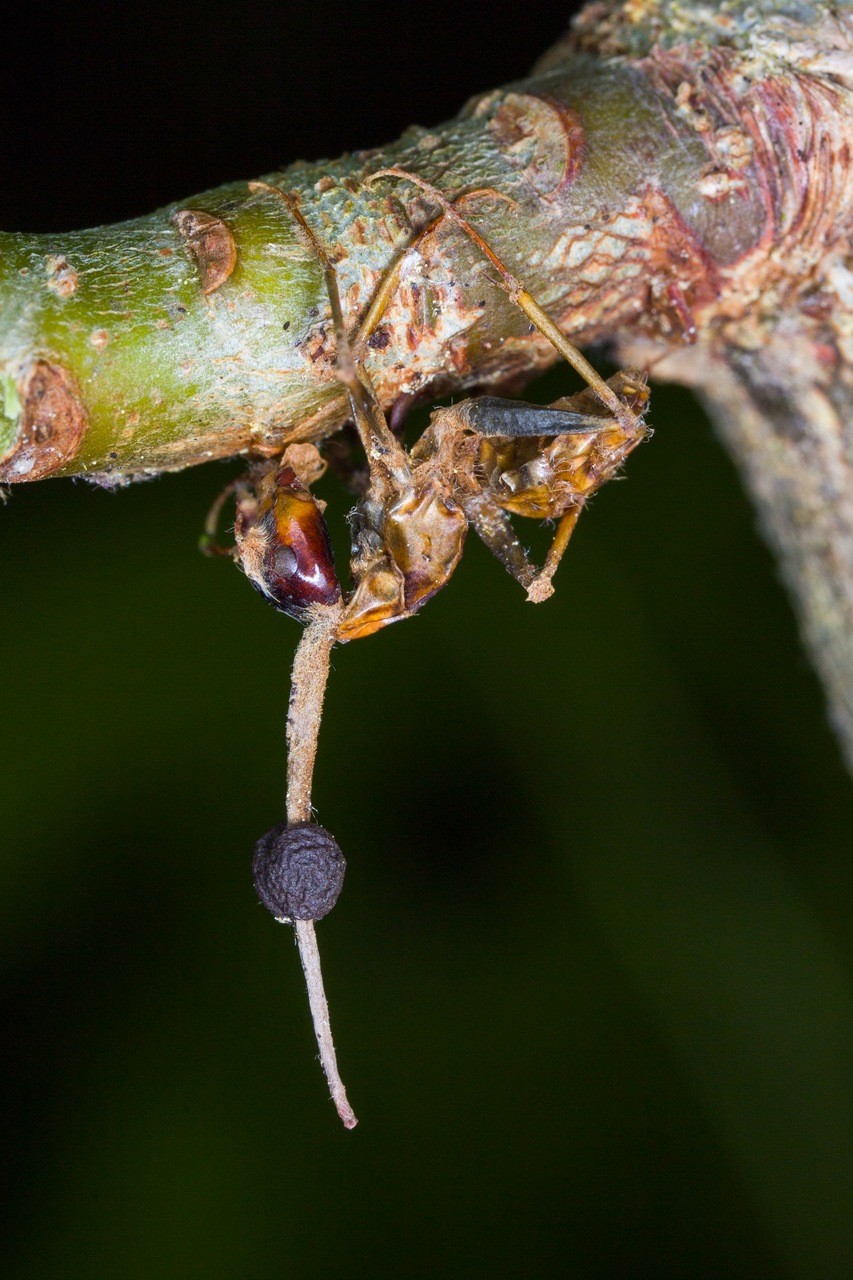 > > Ophiocordyceps kimflemingiae by [Danny Newman](https://mushroomobserver.org/observations/319419) > > >  > > Ophiocordyceps albacongiuae by [Danny Newman](https://mushroomobserver.org/observations/189116) > > > 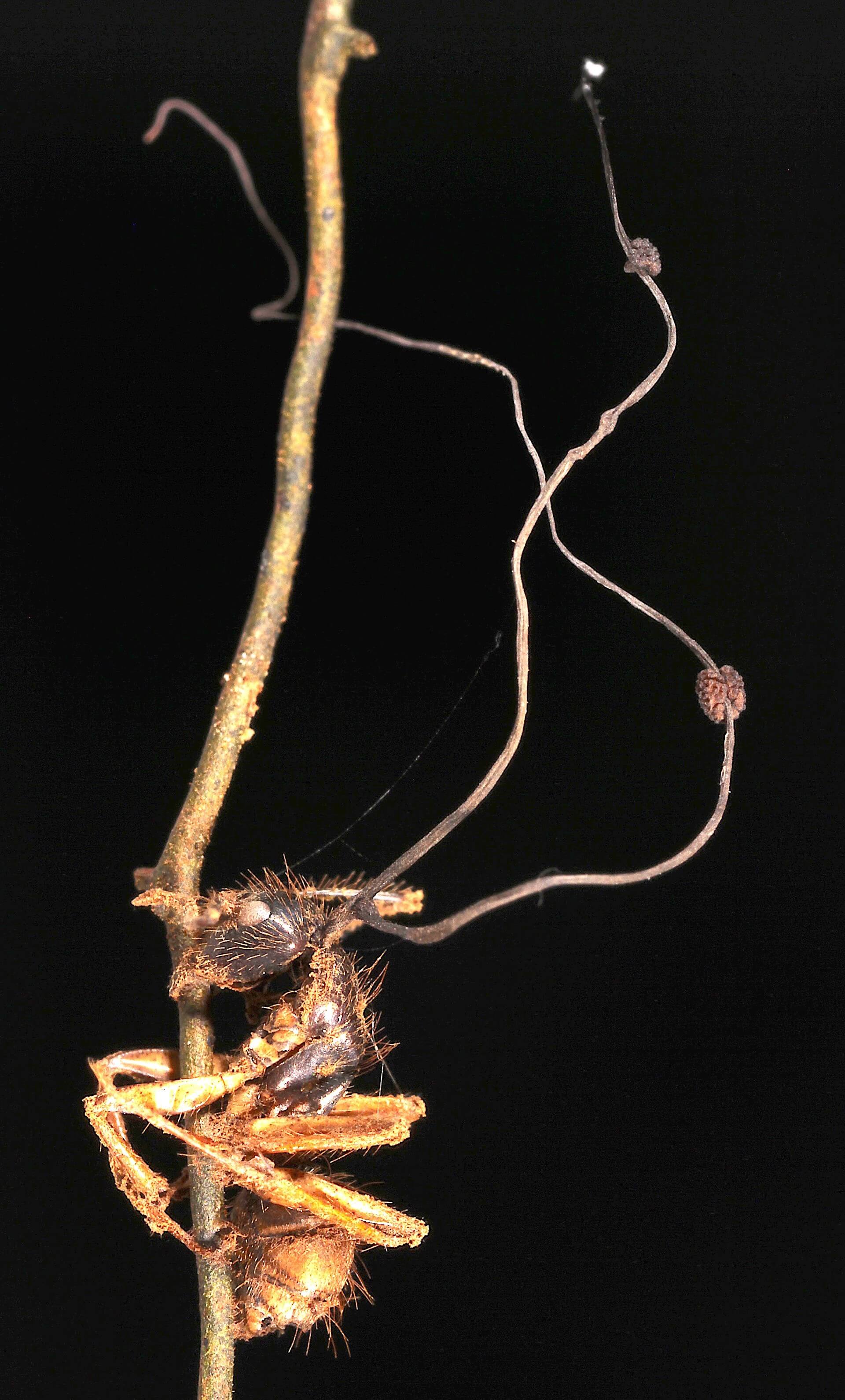 > > Ophiocordyceps camponoti-renggeri by [João P. M. Araújo](https://blog.myrmecologicalnews.org/2018/07/27/ophiocordyceps-ant-infecting-fungi/) > > > 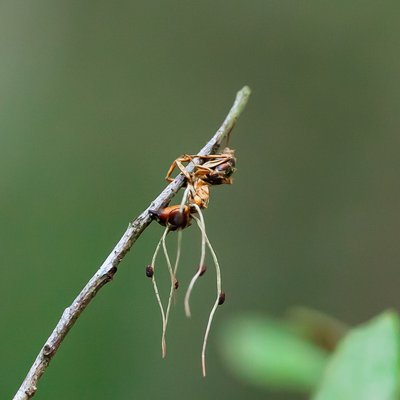 > > O. camponoti-floridani by [Roel Fleuren](https://fungalgenomics.science.uu.nl/portal/ophcf2/) > > 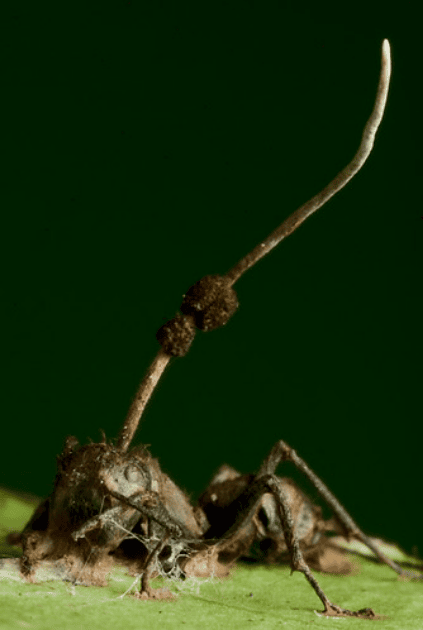 > > Ophiocordyceps ootakii [here](http://toolate.s7.coreserver.jp/kinoko/fungi/ophiocordyceps_ootakii/index.htm) > > 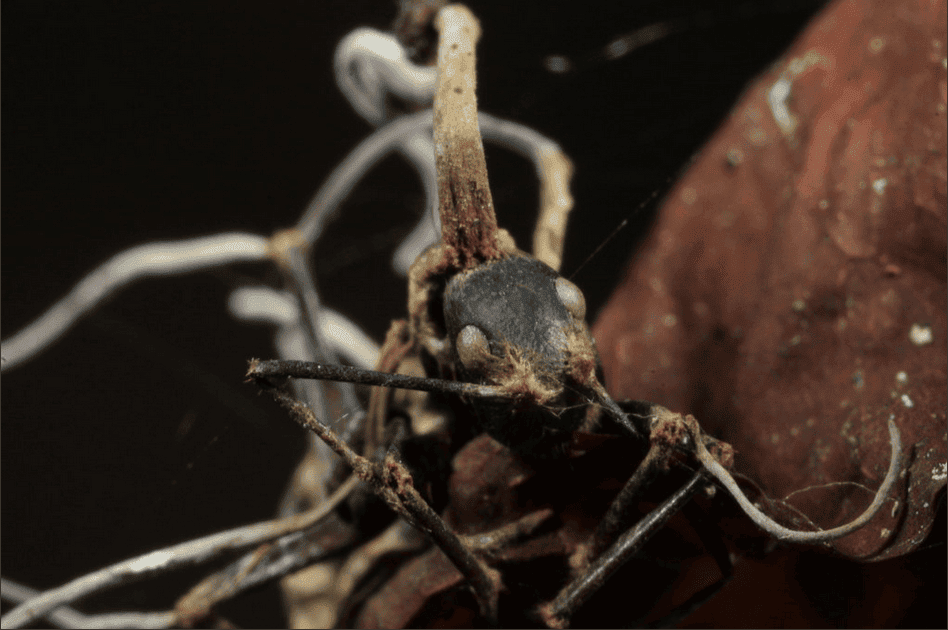 > > Ophiocordyceps camponoti-indiani by [joaofungo](https://www.flickr.com/photos/93480267@N06/13771516214/) > > > 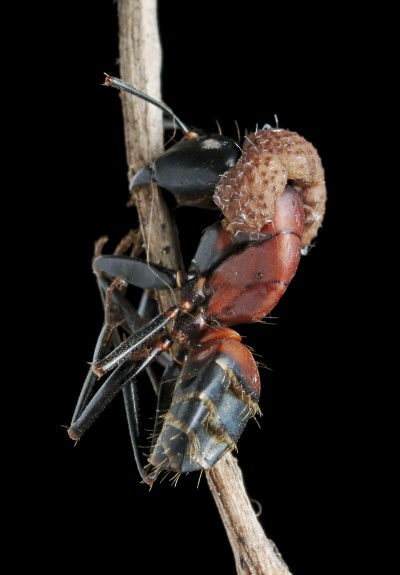 > > Ophiocordyceps pulvinata [here](http://toolate.website/kinoko/fungi/ophiocordyceps_pulvinata/index.htm) > > > 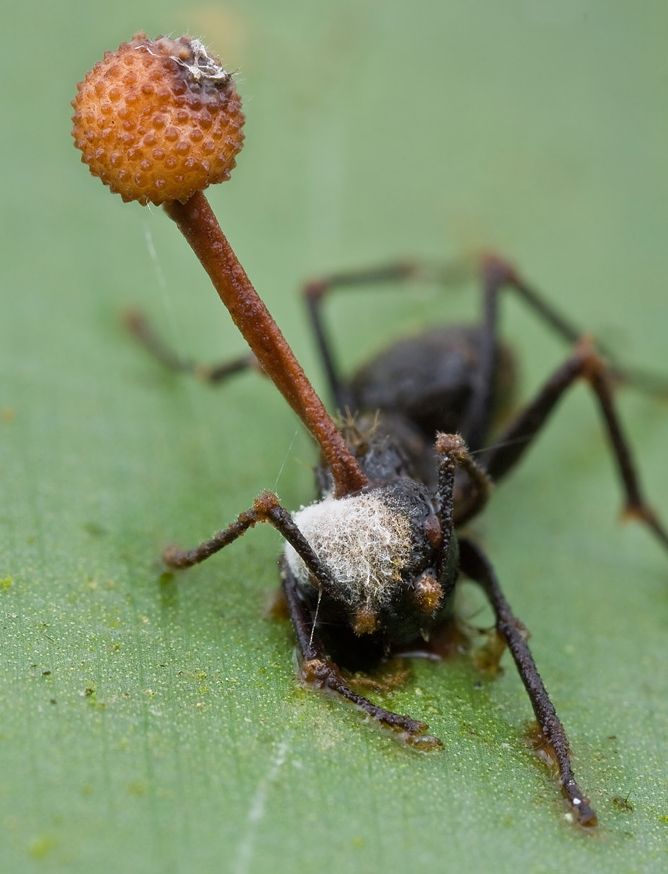 > > Ophiocordyceps unilateralis infecting Formicidae [here](https://biol421.opened.ca/ophiocordyceps-unilateralis-the-zombie-ant-fungus/) > > >  > > Ophiocordyceps unilateralis growing from a carpenter ant by [David Hughes](https://weirdandwonderfulwildmushrooms.blogspot.com/2014/11/diabolical-parasites-ophiocordyceps.html) > > > 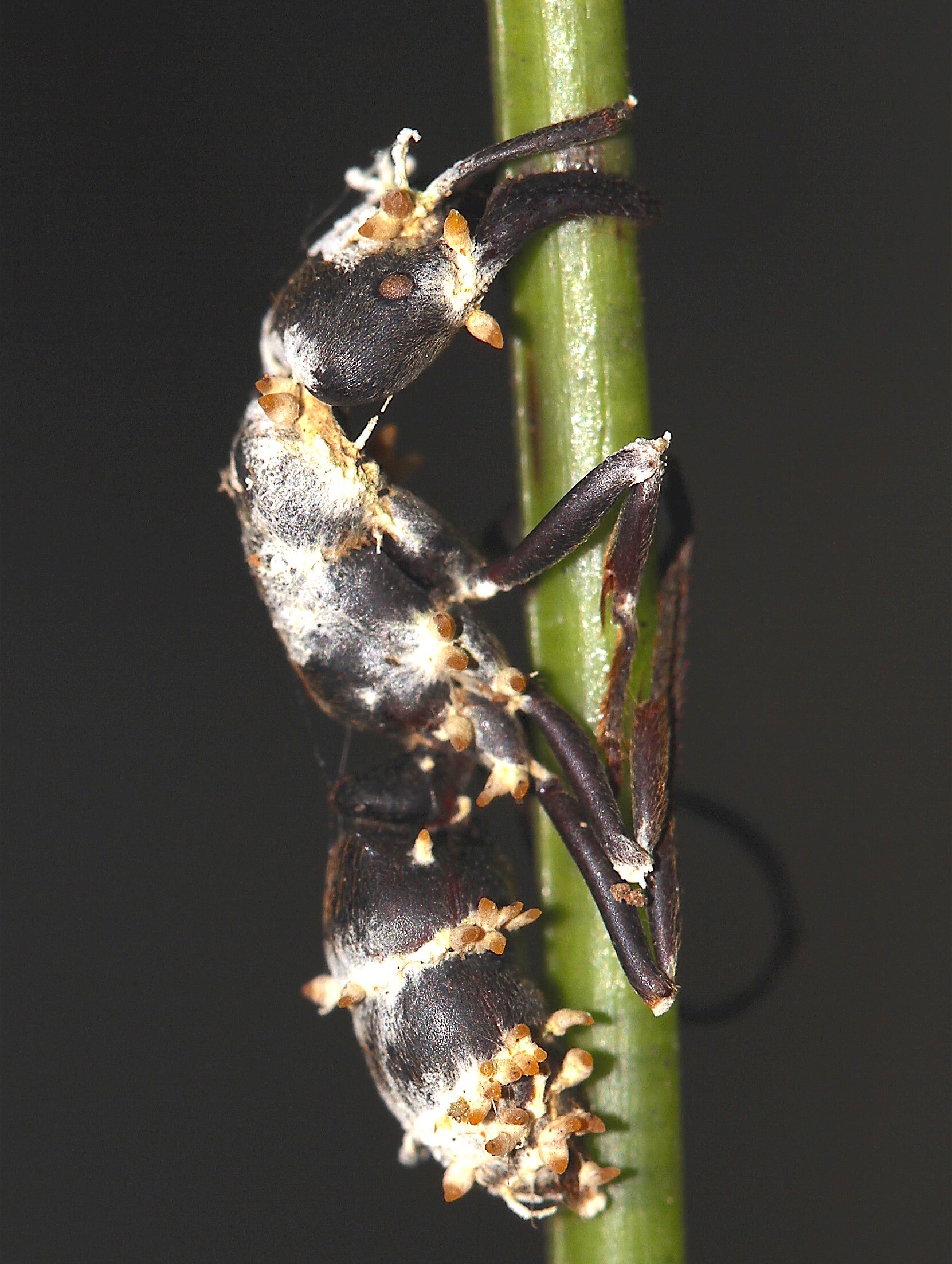 > > Palthotyreus tarsatus biting onto a green stem. Once infected by an Ophiocordyceps species (still undescribed) by [João P. M. Araújo](https://blog.myrmecologicalnews.org/2018/07/27/ophiocordyceps-ant-infecting-fungi/) > > > 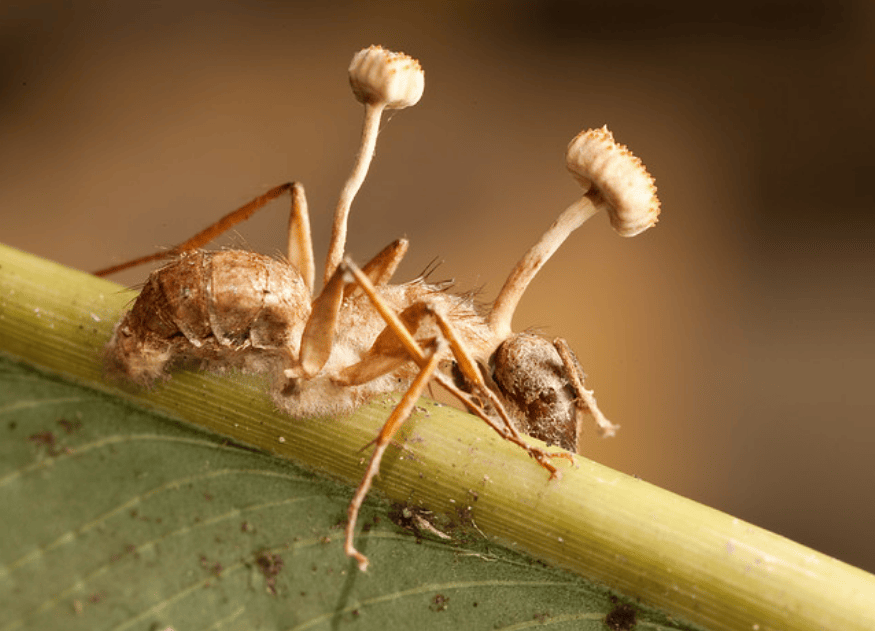 > > Apologies I can't remember where I found this one, but it's too good not to share....If anyone knows the photographer let me know in the comments and I'll edit. Cheers > > All info and quotes via [wikipedia](https://en.wikipedia.org/wiki/Ophiocordyceps_unilateralis#Ophiocordyceps_unilateralis_sensu_lato) > > I'm not an expert, I just like sharing interesting things I find. Any errors please post a comment and I'll edit..... and as always please leave a comment as it gives me encouragement to do further posts 👍
> Many signature French cheeses currently rely on just one single fragile strain of fungi — Penicillium camemberti — which is unfortunately at risk of dying out. cross-posted from: https://lemmy.zip/post/12041593 > > Countless fans took to social media to share ways they're enjoying brie before the cheese is gone for good
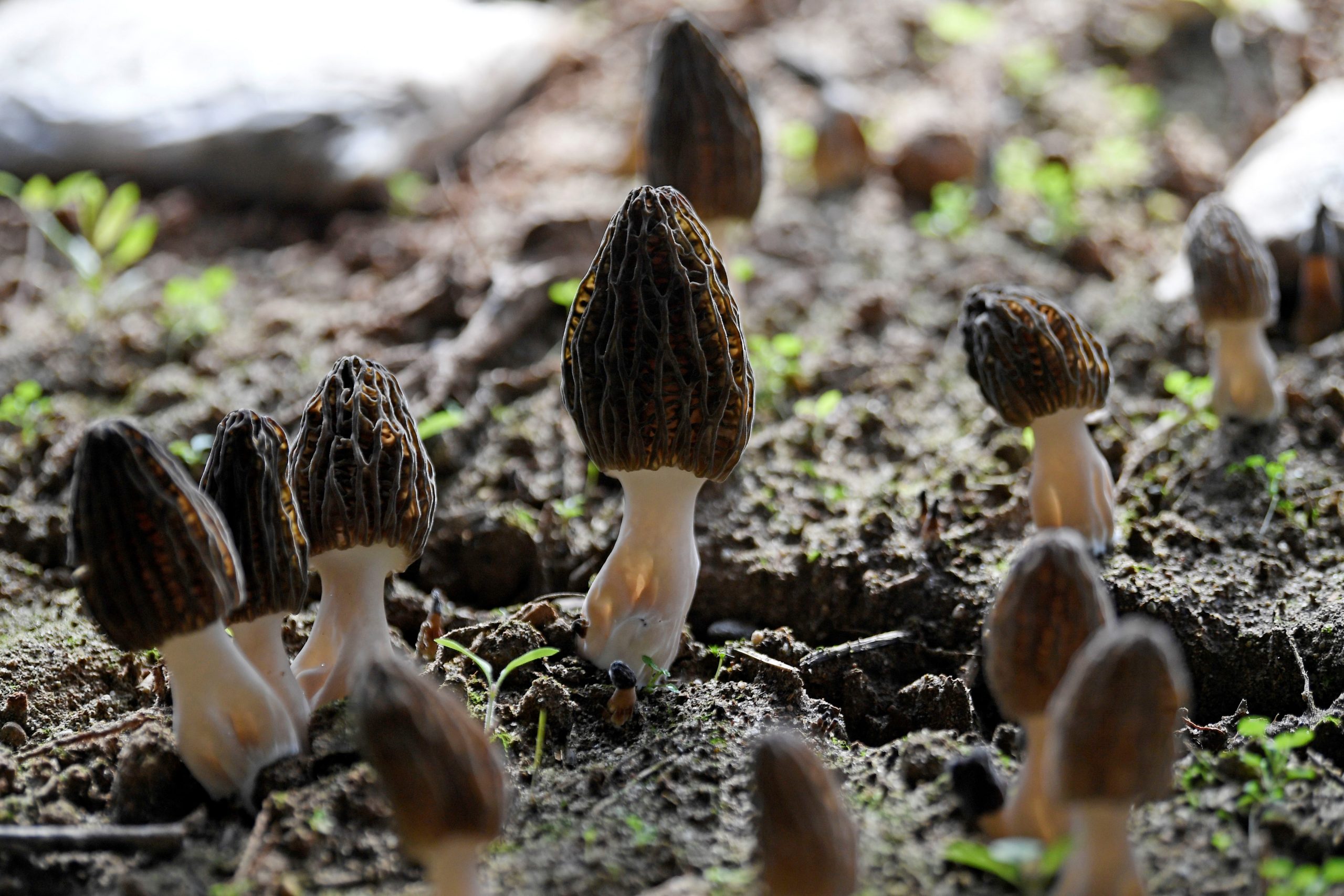 arstechnica.com
arstechnica.com
On Thursday, Montana health officials published an outbreak analysis of poisonings linked to the honeycombed fungi in March and April of last year. The outbreak sickened 51 people who ate at the same restaurant, sending four to the emergency department. Three were hospitalized and two died. Though the health officials didn't name the restaurant in their report, state and local health departments at the time identified it as Dave’s Sushi in Bozeman. The report is published in the Centers for Disease Control and Prevention's Morbidity and Mortality Weekly Report.

Ophiocordyceps clavulata is a fungi parasite of scale insects feeding on trees including Pignut Hickory and American Hazel. It grows up to 4 mm From the very limited information on the internet it's usual habitat is North America and Canada, but has also been recorded in Sweden 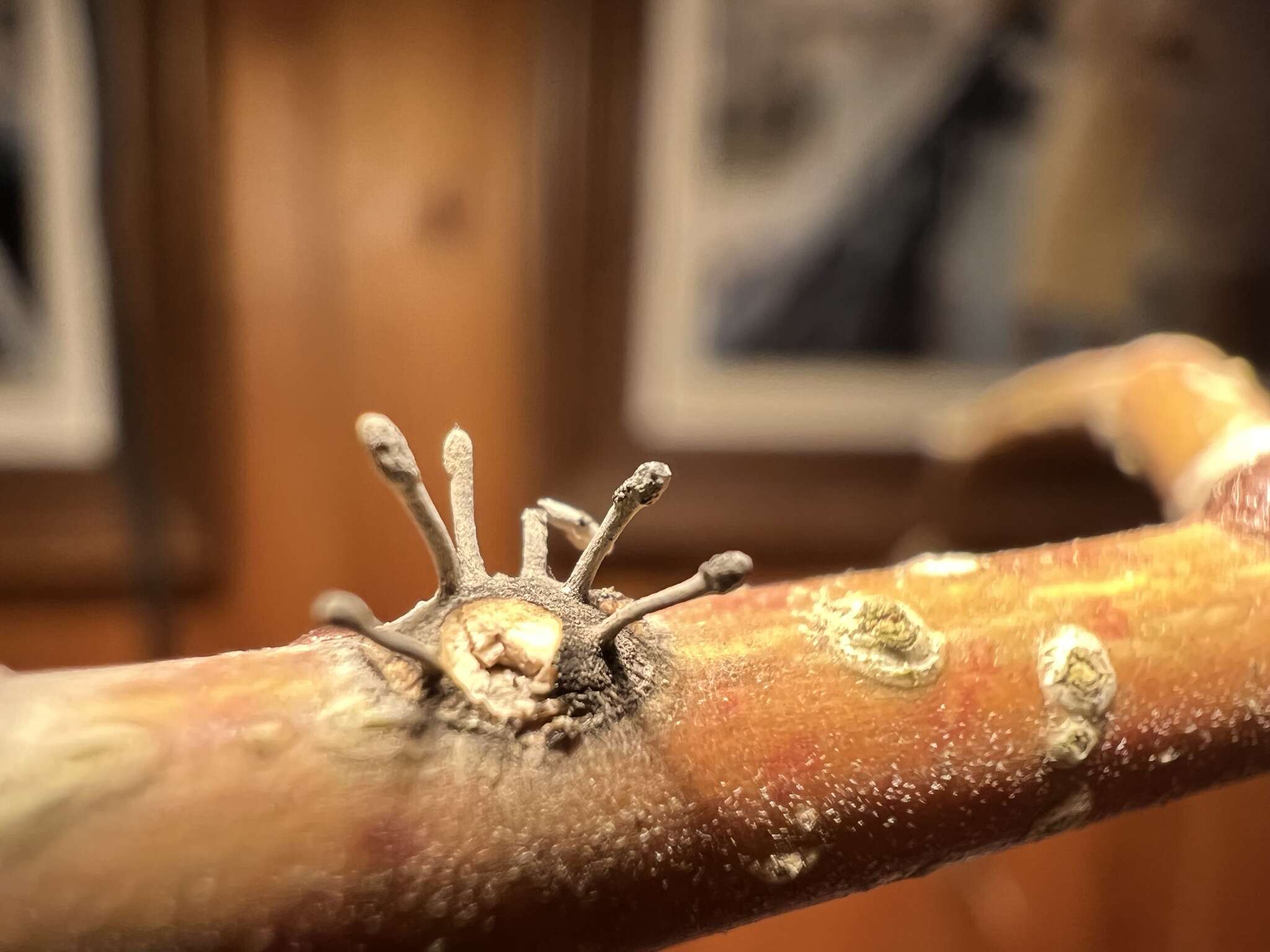 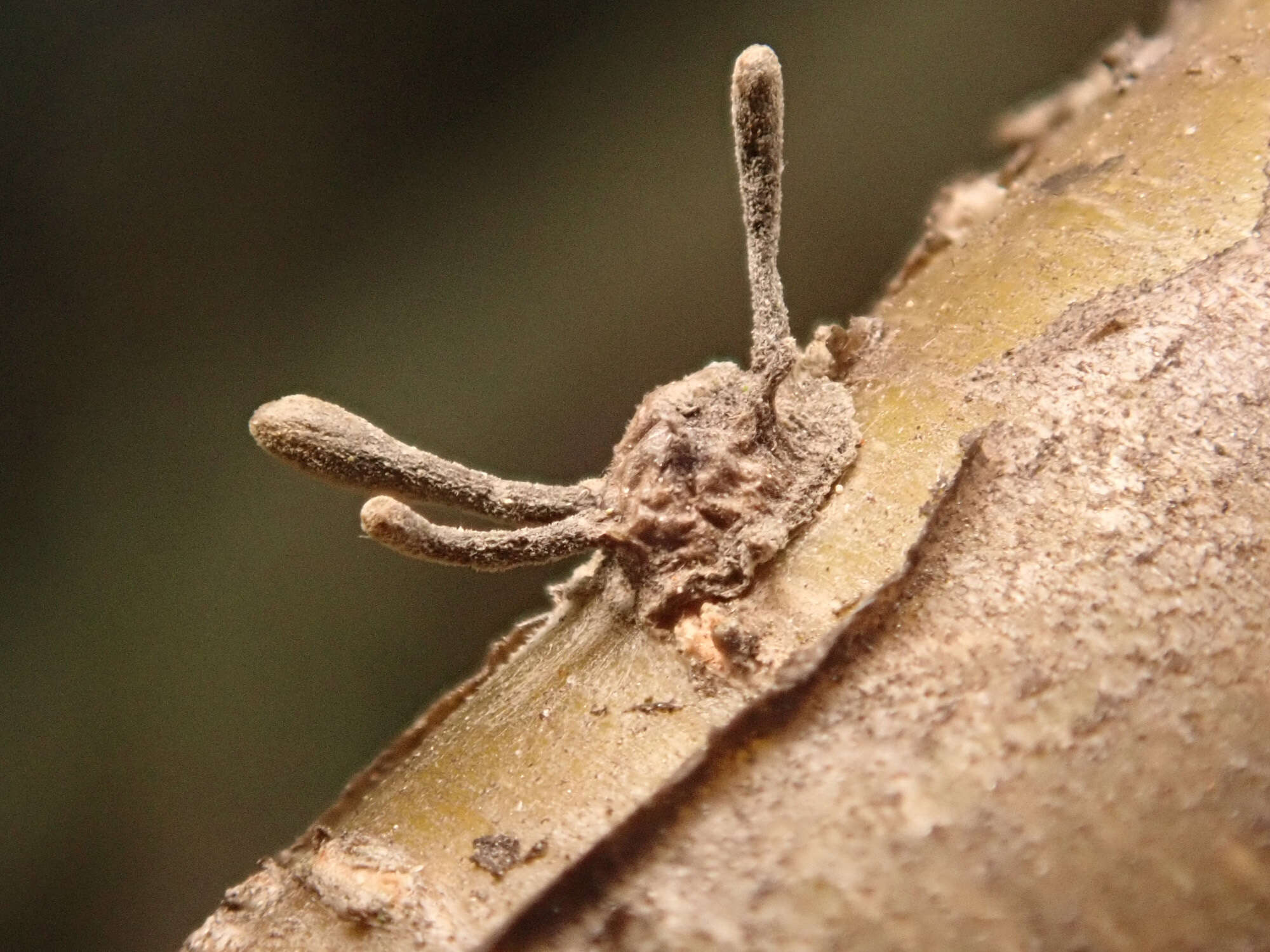 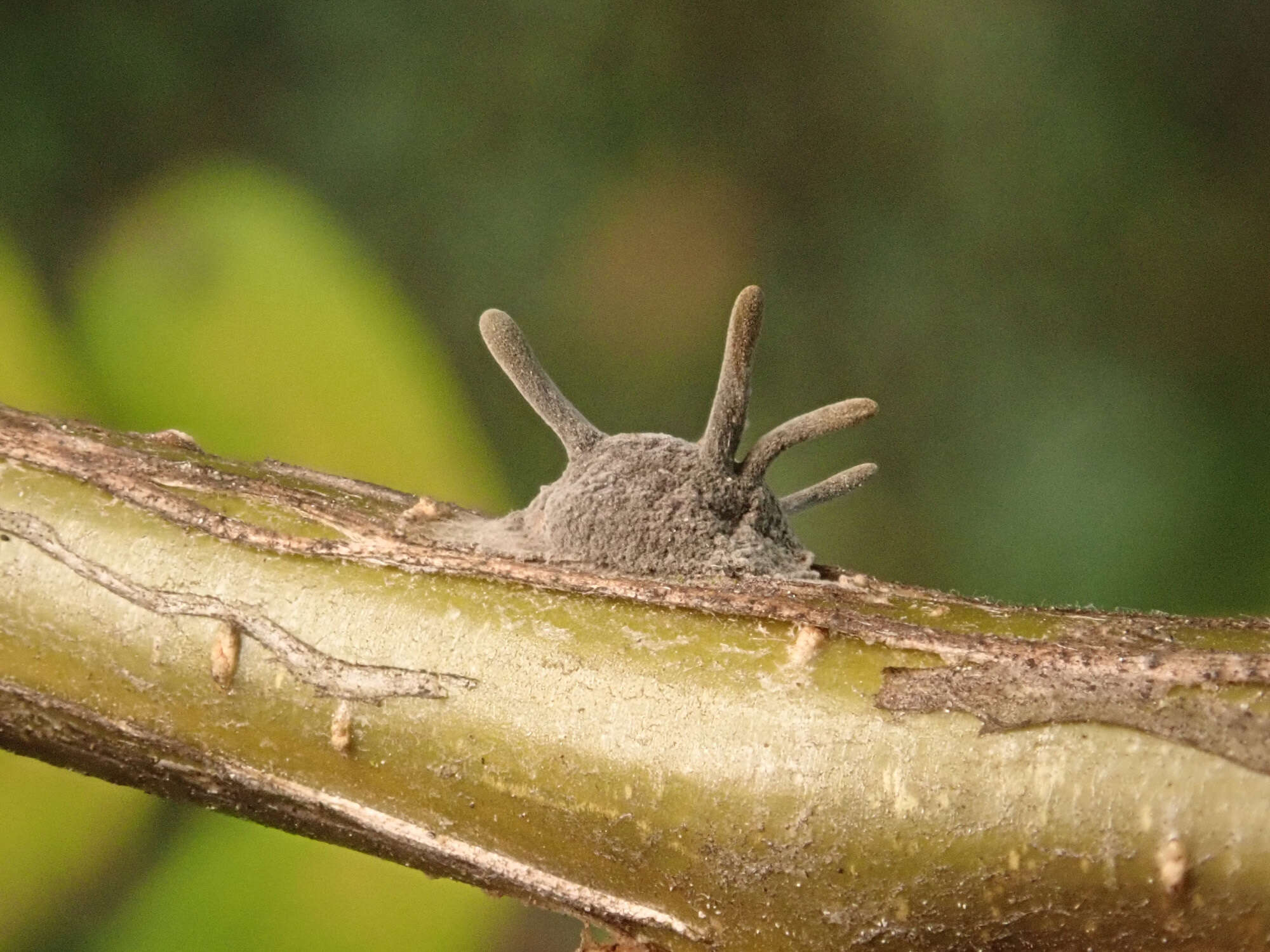 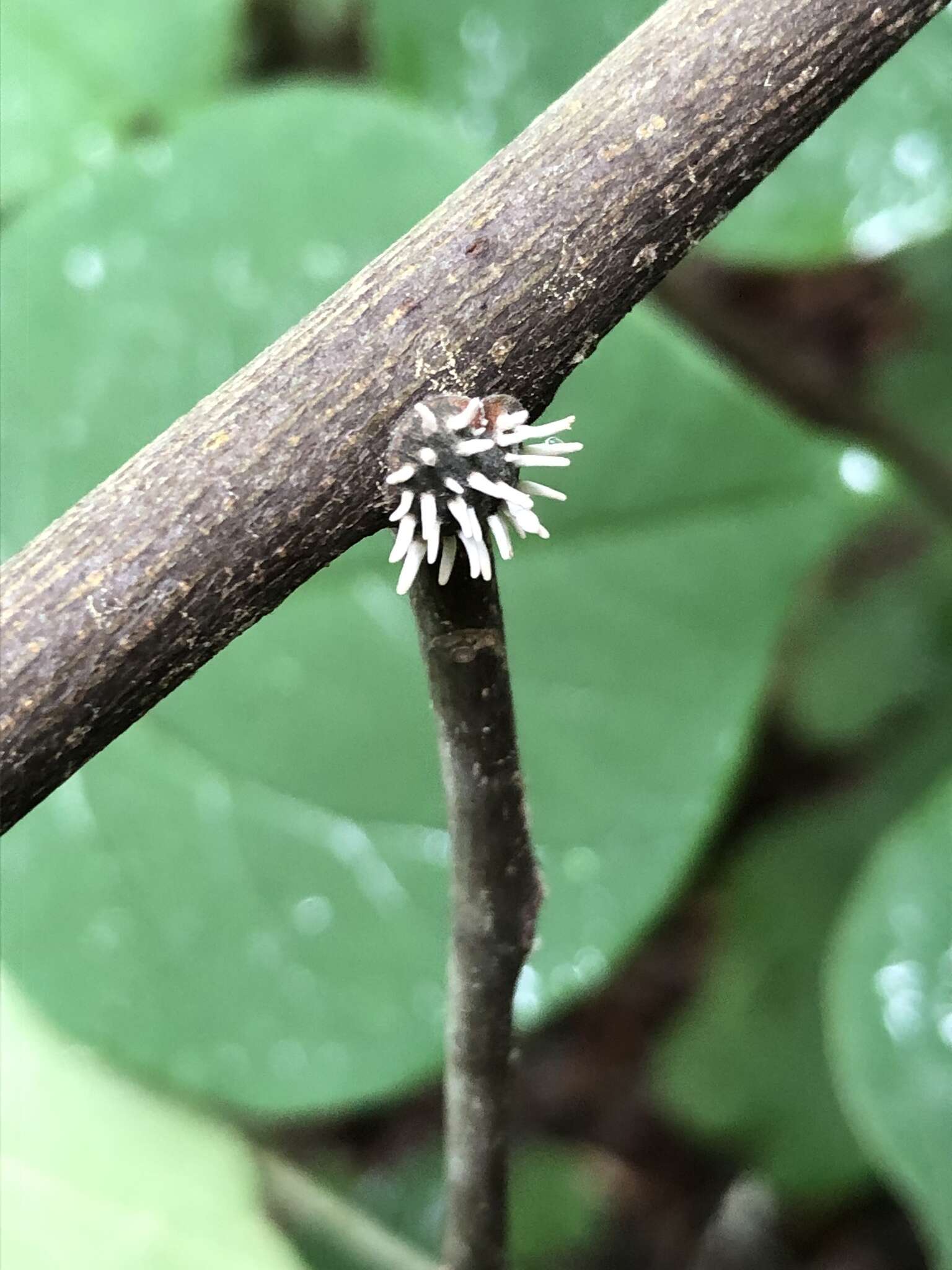 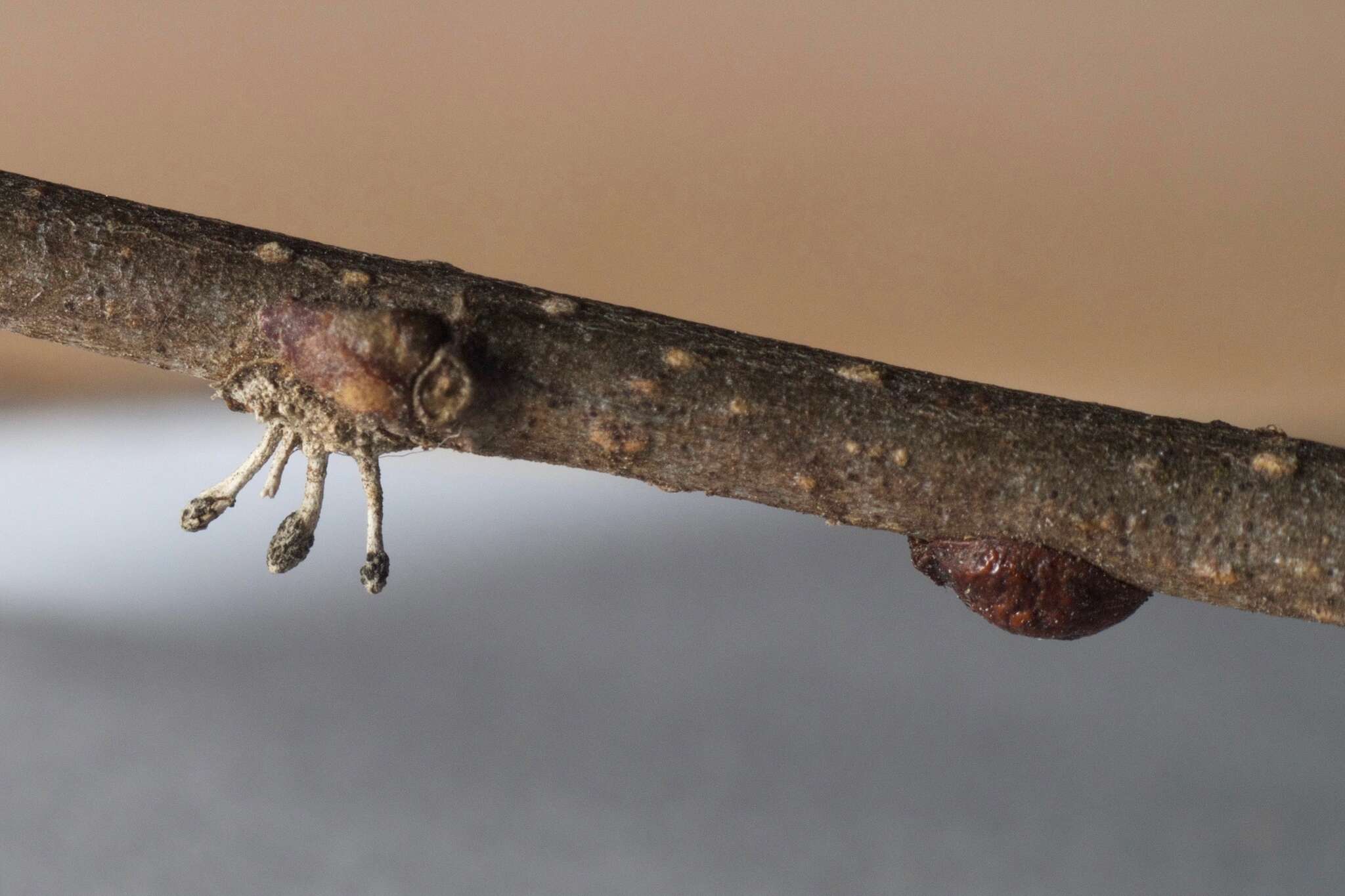 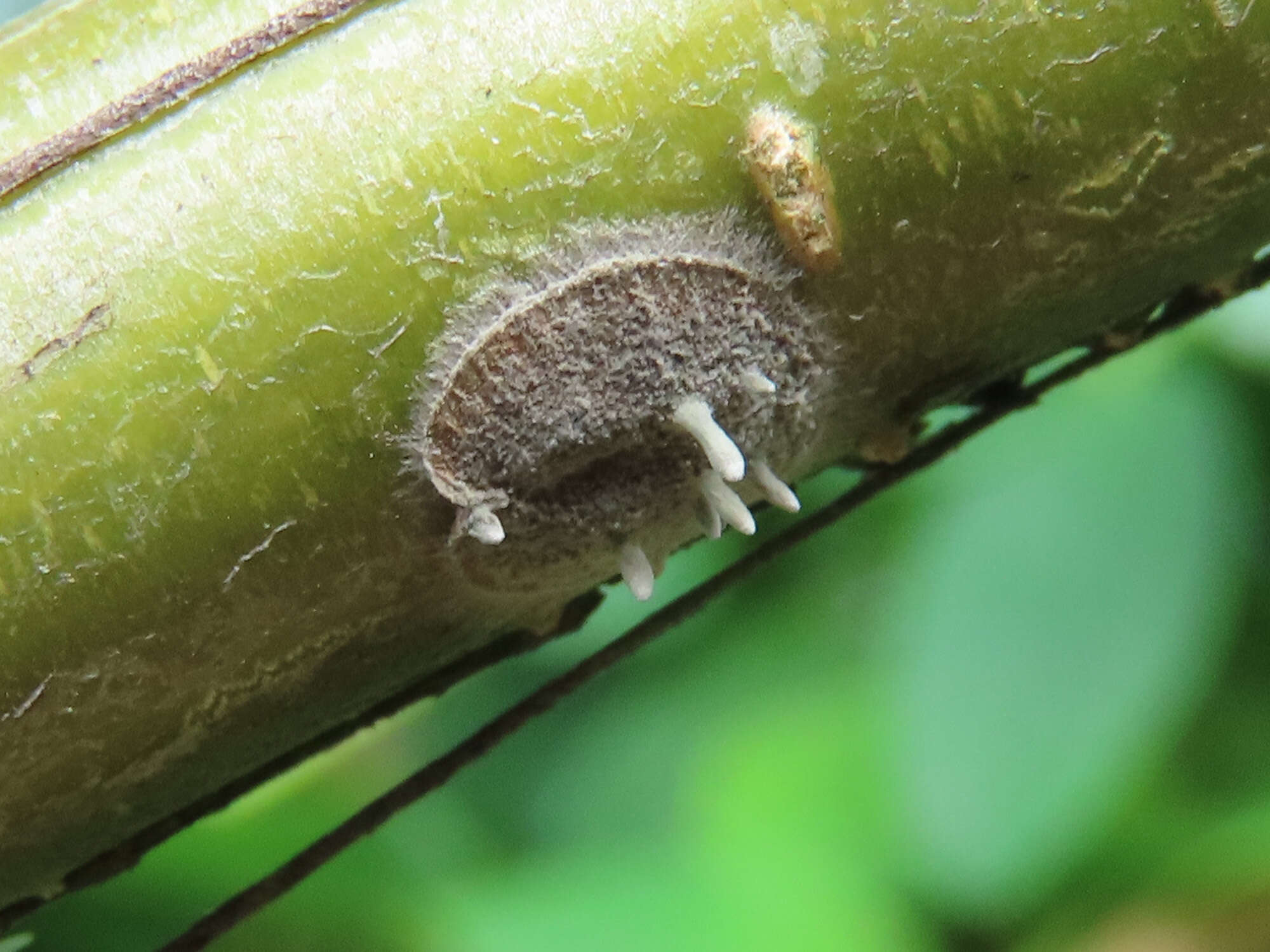 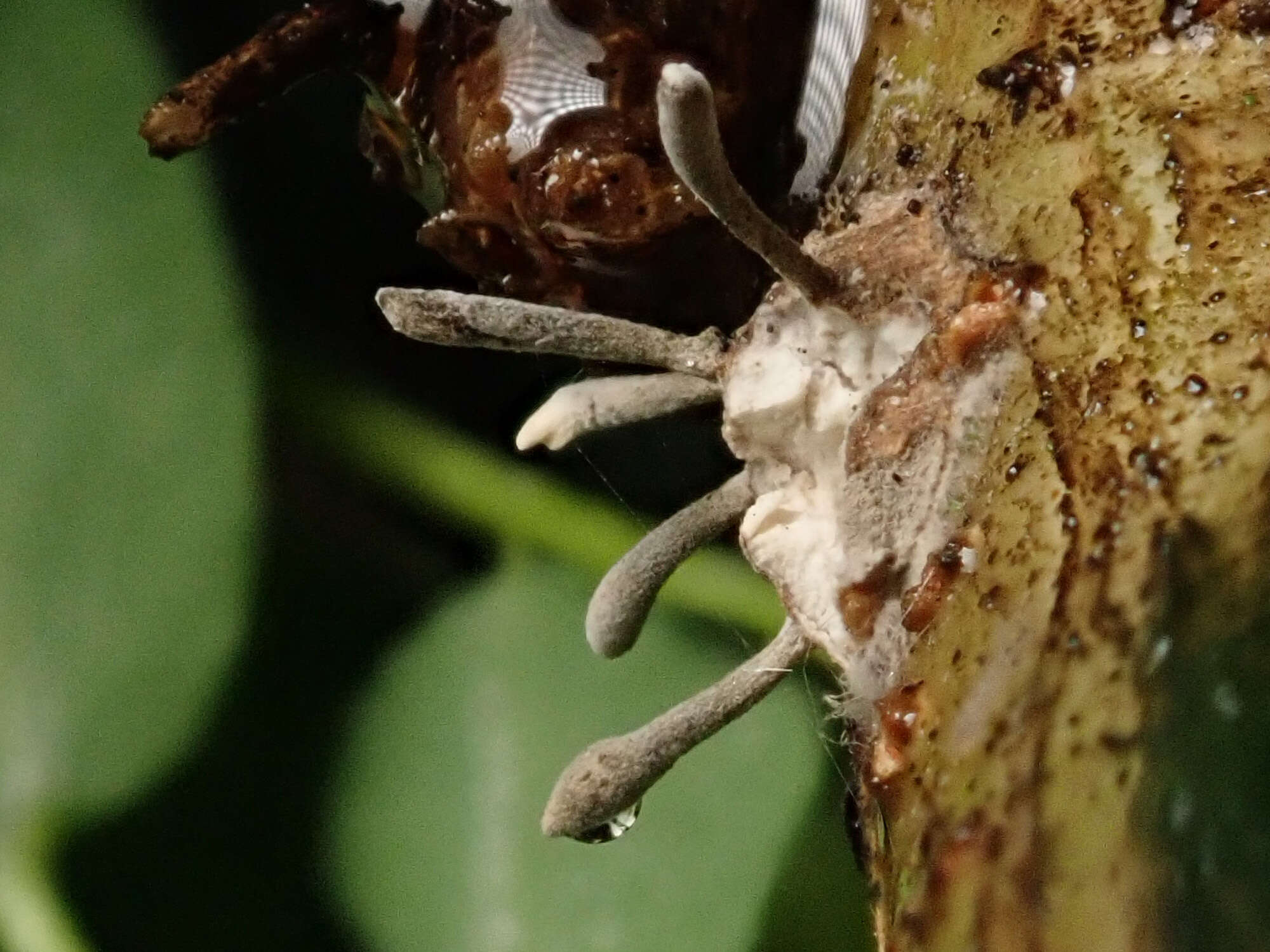  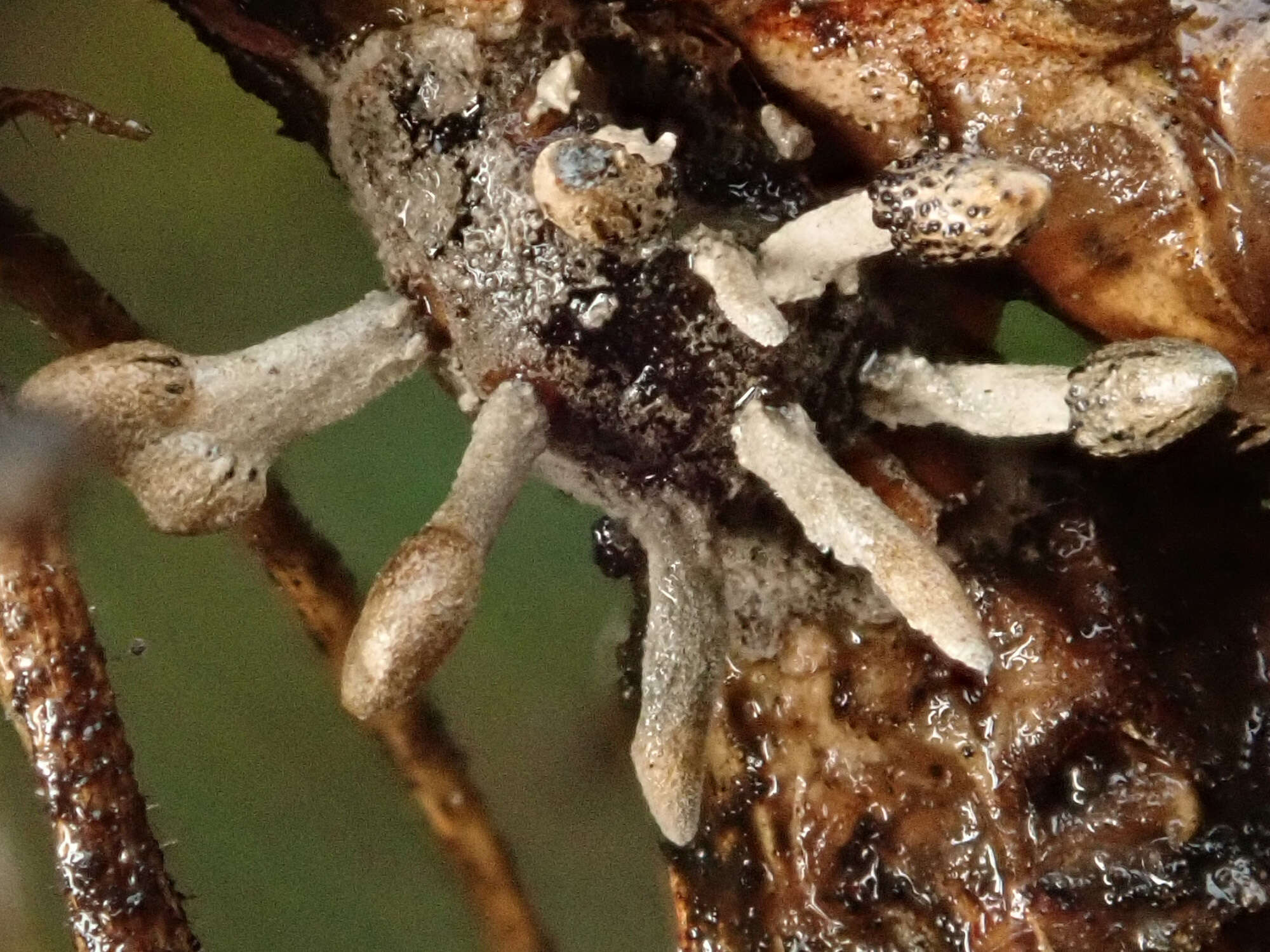 All photos via [eol](https://eol.org/pages/18305928/media) All info via [eol](https://eol.org/pages/18305928) and [here](https://www.marylandbiodiversity.com/view/18150) Any corrections please post in comments and I'll edit my post

>staghorn fungi at longshaw Found in wood at longshaw below pond UK Photo by [desassessor](https://www.flickr.com/photos/desdynamo/2661547275/in/pool-fungiuk/)

Phaeocalicium polyporaeum is a tiny mycoparasitic fungus, seen here on its most common host, Trichaptum cf biforme, although it has also been reported on Trametes versicolor.

cross-posted from: https://lemmy.ml/post/11022800 > >Always a delight to spot colourful waxcaps and even better to capture underside shots. Where possible, I prefer not to pick them and use my Pentax point and shoot, pressed down into the substrate, but sometimes this is not possible. > > Found on [flickr](https://www.flickr.com/photos/68769579@N07/51676102582/) >

https://twitter.com/ferrisjabr/status/1334216214436986881

This is [hair ice](https://en.m.wikipedia.org/wiki/Hair_ice). It is formed on dead barkless wood and a fungus called Exidiopsis effusa is the main reason. I found this [and many more](https://imgur.com/gallery/rWBdhMl), during late autumn in a forest in Northern Denmark

This is from earlier this year in Northern Denmark

I have no knowledge but loads of fascination towards mushrooms and fungus in general

I think it's a *Lycoperdon*. Maybe *Lycoperdon perlatum*.










